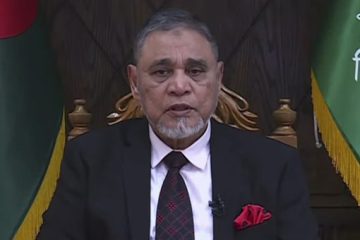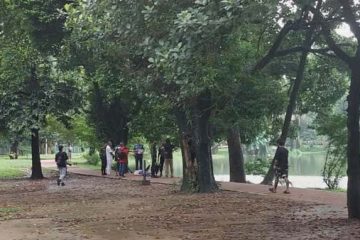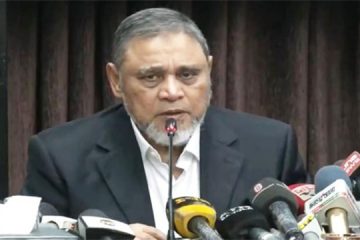Realising that lack of proper dredging encourages grabbers to occupy the city’s canals, the Water and Sewerage Authority (WASA) has taken up a micro-dredging project for 26 city canals, rendered stagnant by liquid and solid wastes. The BWDB and WASA recently reclaimed the Ramchandrapur canal in Mohammadpur and Kalayanpur canal in Mirpur-1; it is alleged, however, that most of the portions of the canals have already been illegally occupied by ruling party activists and local crooks.
“We have a plan for micro-dredging of canals to remove the wastes. A memorandum of understanding (MoU) will be signed with the Netherlands in this regard, in the first week of October,” Taqsem A Khan, managing director of WASA, told The Independent on Saturday.
Abu Naser Khan, chairman of the Bangladesh Paribesh Bachao Andolan, alleged, “Crores of taka are being misappropriated in the name of reclaiming the canals. It is just eyewash. The government should take stern action against whoever is involved in the encroachment of the canals.”
The National Task Force on Rivers had issued an order on September 29, 2010, to free Dhaka’s 26 canals from encroachment and remove all illegal structures from their banks.
In line with the task force’s directive, the authorities freed the Ramchandrapur and Kalyanpur canals from encroachers. But the canals have again been occupied by the encroachers, due to lack of monitoring.
The Ramchandrapur canal, flowing through the Katasur area of Mohammadpur, has been grabbed by a truck union, a dairy, and poultry farm, while a sign-board on its bank announces the name of Zaker Party, a minor offshoot of the ruling Awami League-led Grand Alliance. The same fate has befallen the Kallyanpur canal near the Mirpur-1 mazar.
The BWDB had reclaimed the Ramchandrapur canal in April last year, at a cost of Tk. 26 lakh, said BWDB executive engineer Dr Tariq Abdullah Al Fayas.
Despite various government initiatives, such as the construction of walkways around the moribund canals, the encroachment of different canals crisscrossing the capital continues unabated. According to experts, the 65 canals interconnecting the four city rivers—Turag, Shitalakhya, Balu and Buriganga—used to function as a natural drainage system for flushing out rainwater, ever since the city was founded by the Mughals 400 years ago.
According to different land surveys, particularly the Dhaka City Survey 1995–2009, Dhaka Water Supply and Sewerage Authority (DWASA) acknowledged that there were at least 65 canals, the number of which came down to 43, in course of time. Of these, some 20 canals are already dead, as most of them have been mindlessly filled up, either fully or partially.
In December 2011, shipping minister Shahjahan Khan, who heads the task force to ensure navigability and natural flow of all important rivers flowing around the capital, said that the task force was expected to reclaim only 13 out of the 43 canals, as the rest of the canals had been filled up beyond reclamation.
-With The Independent input




















